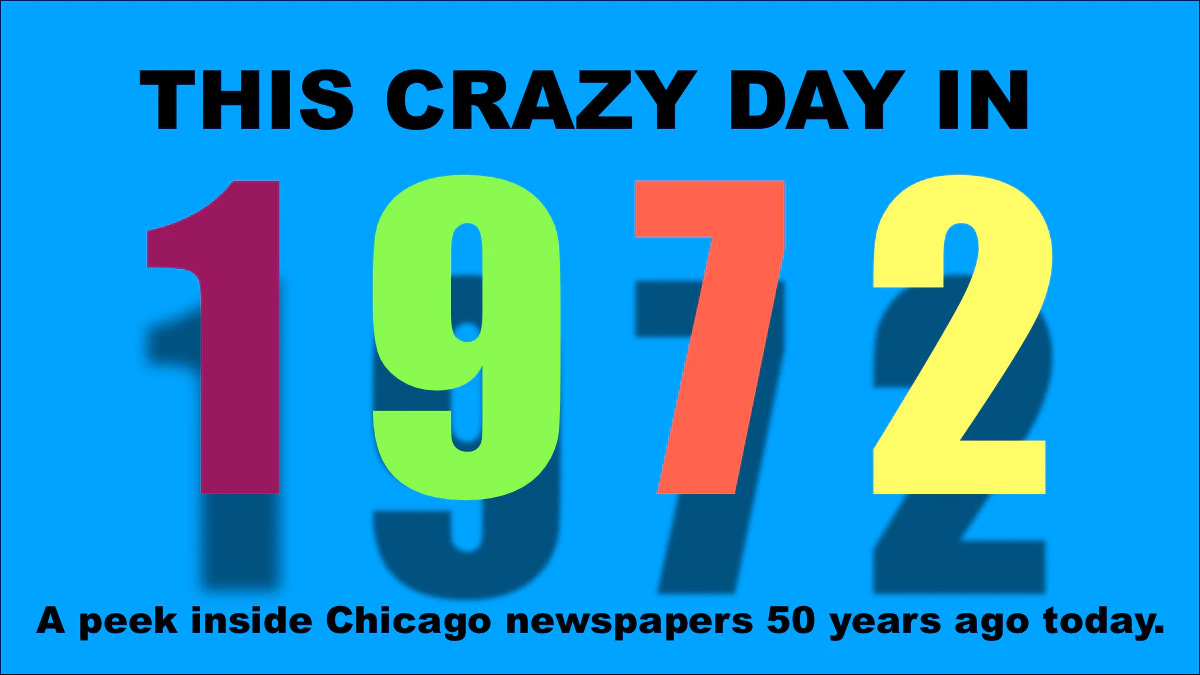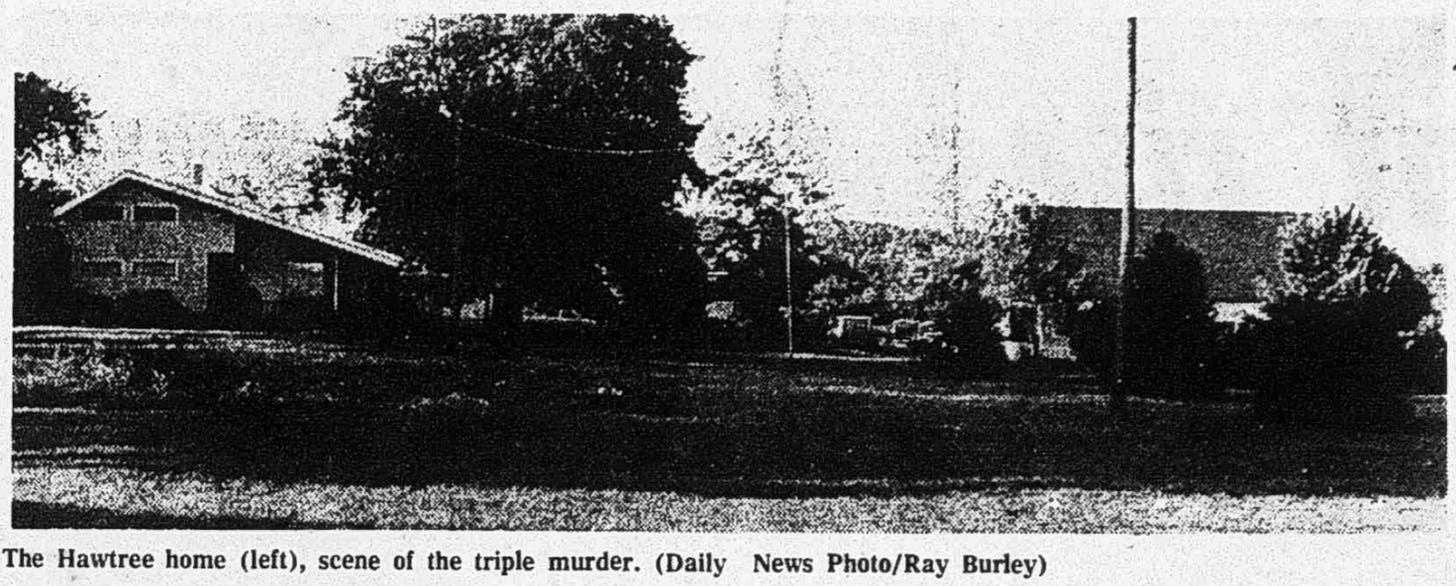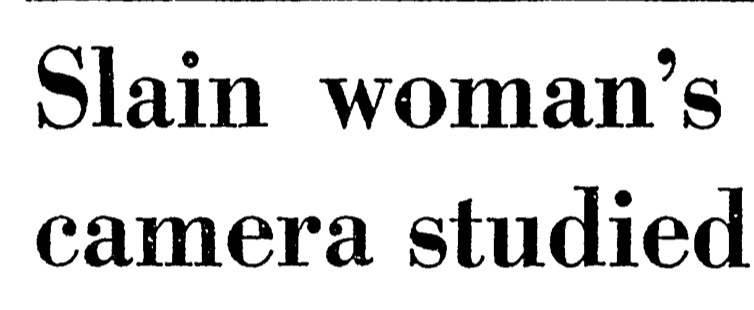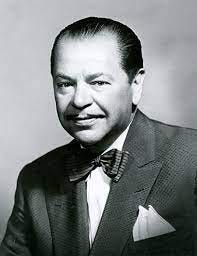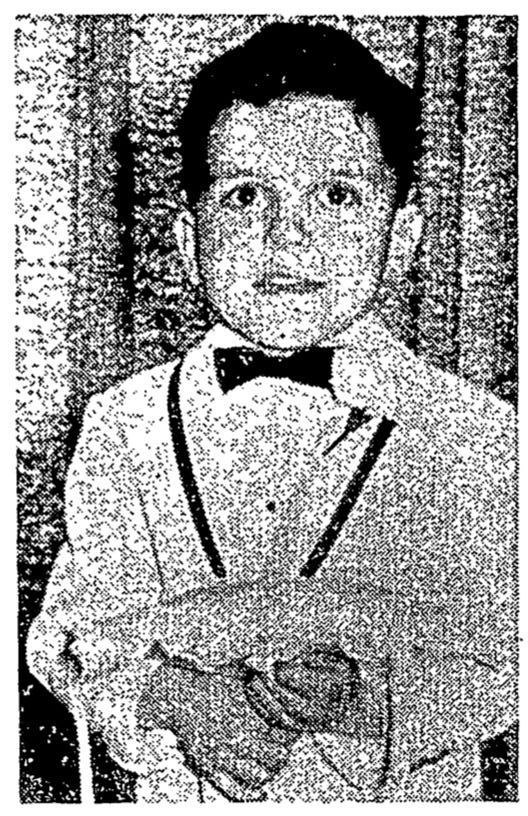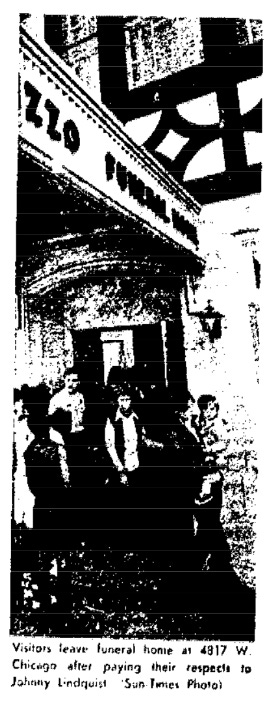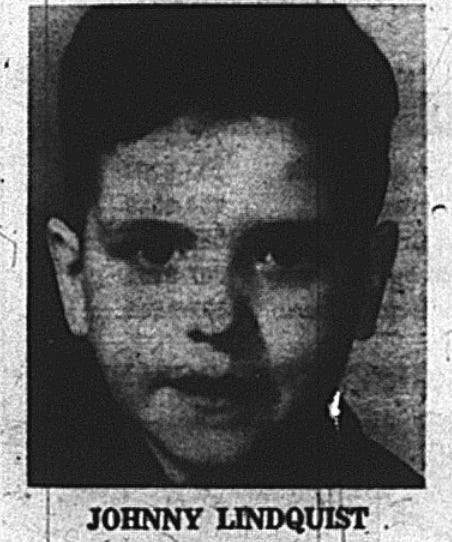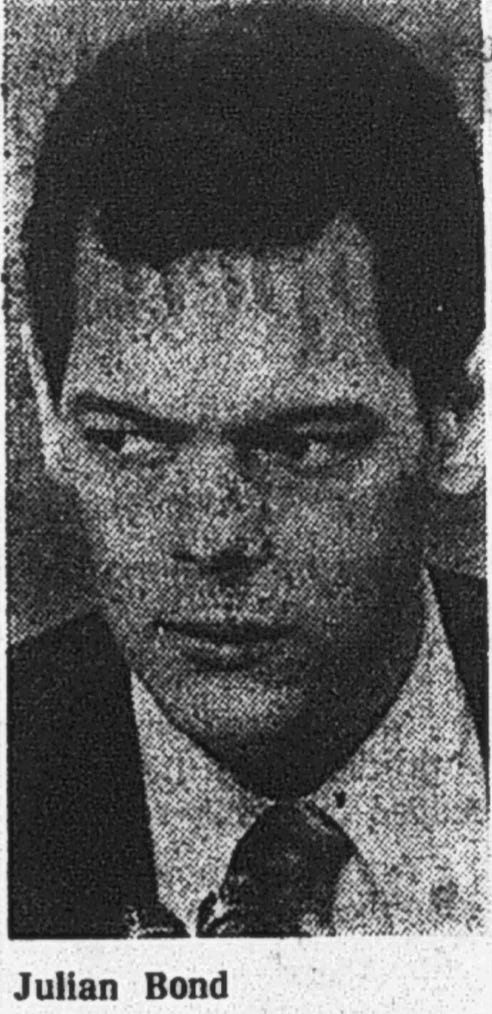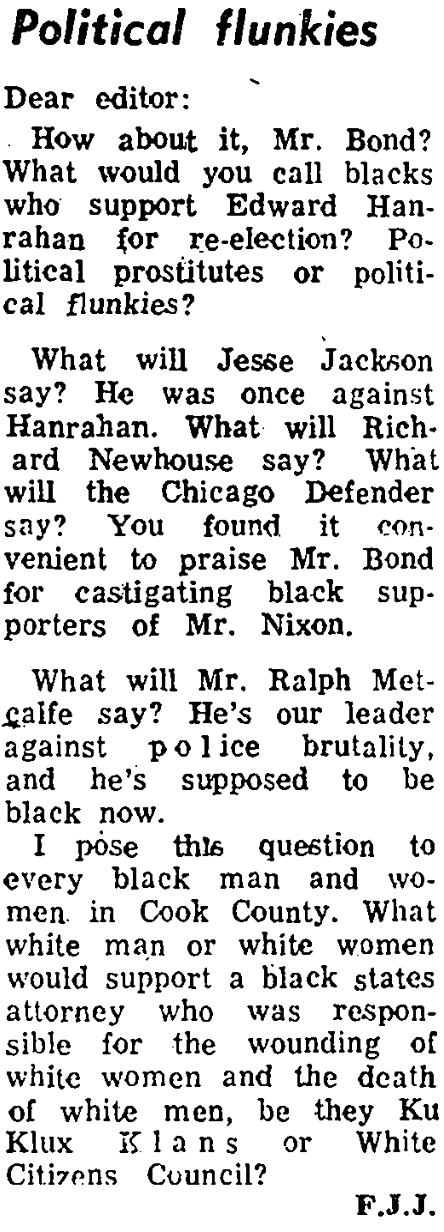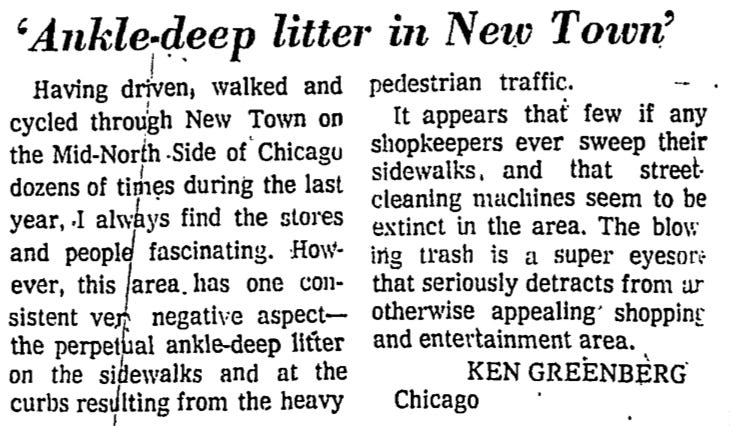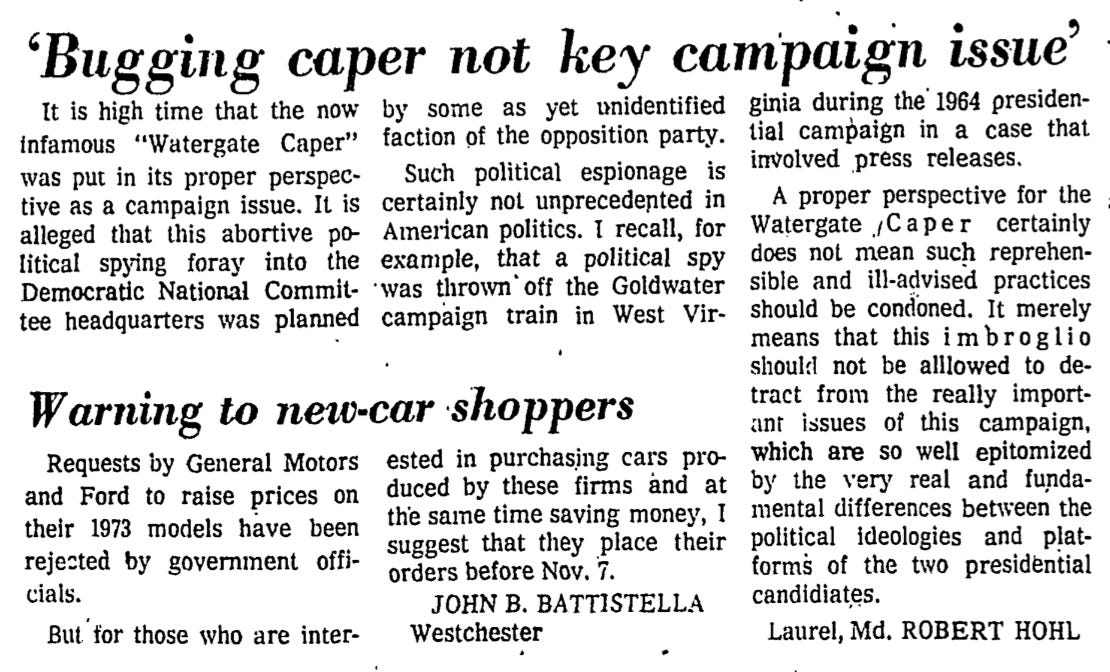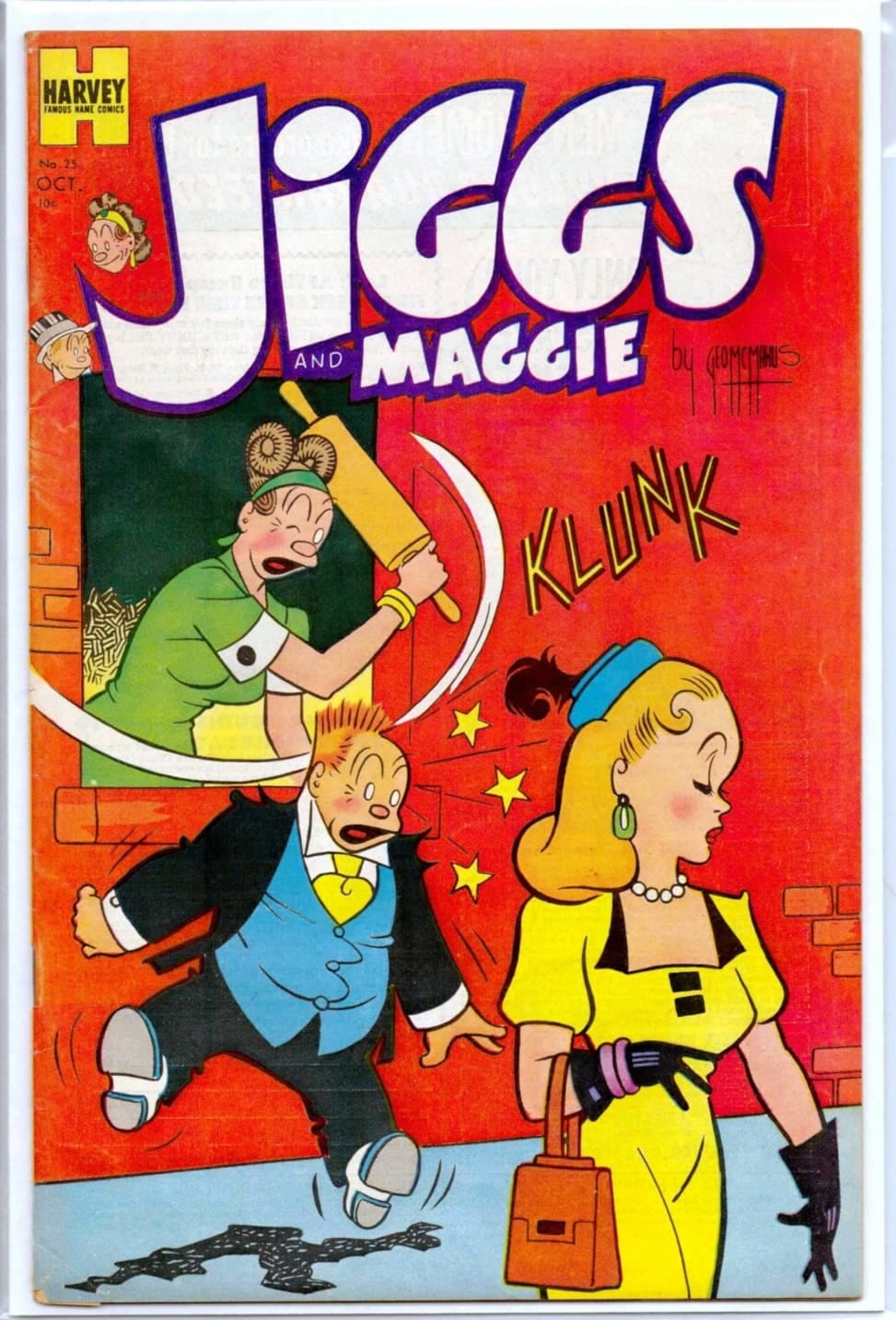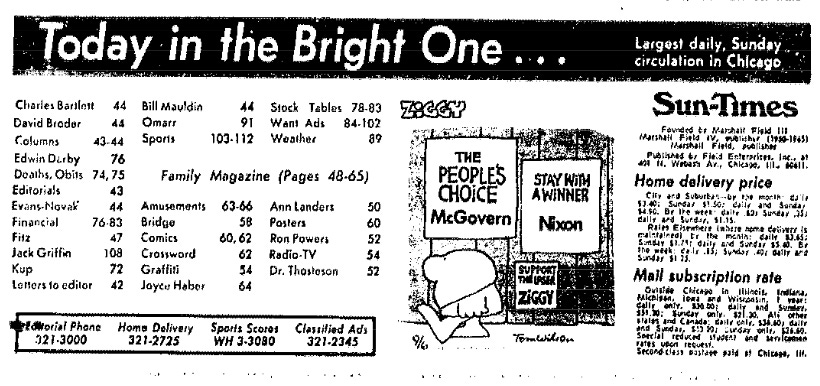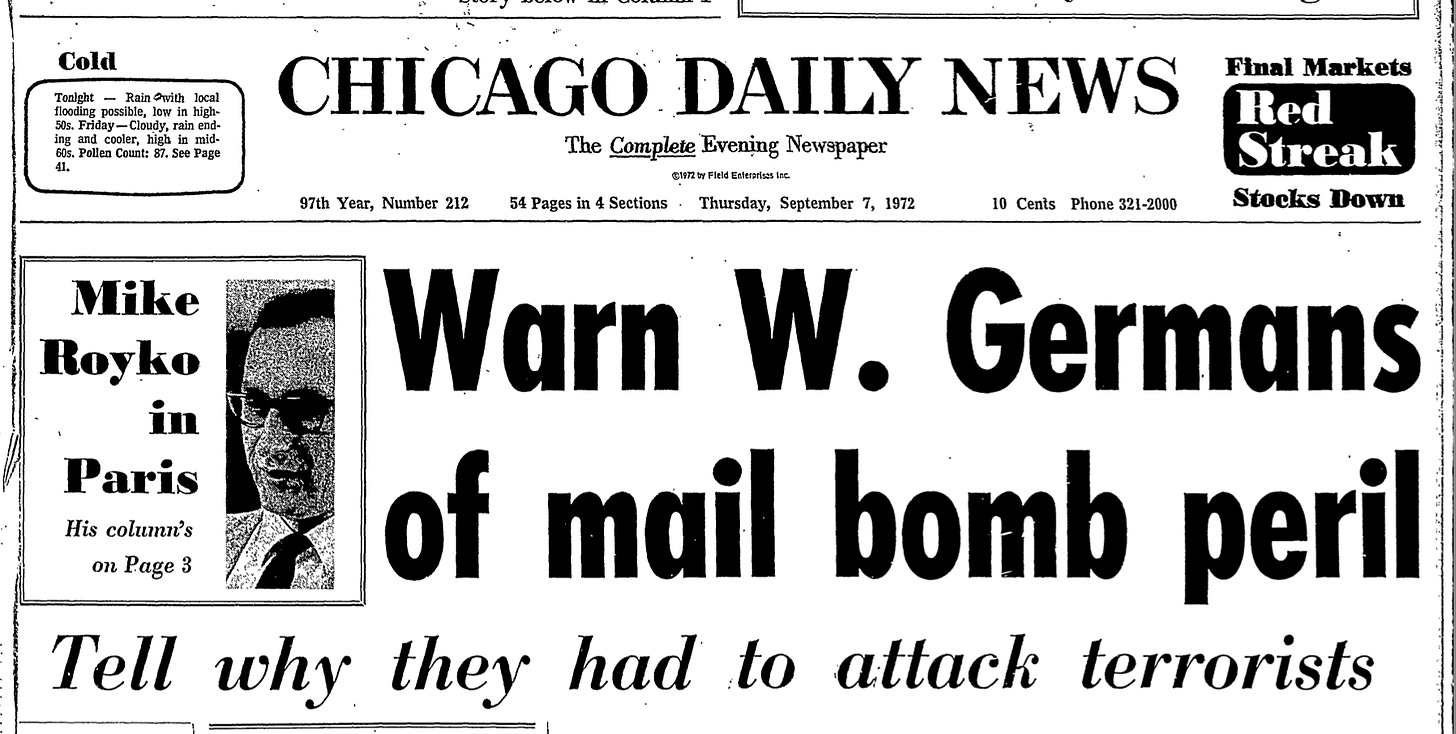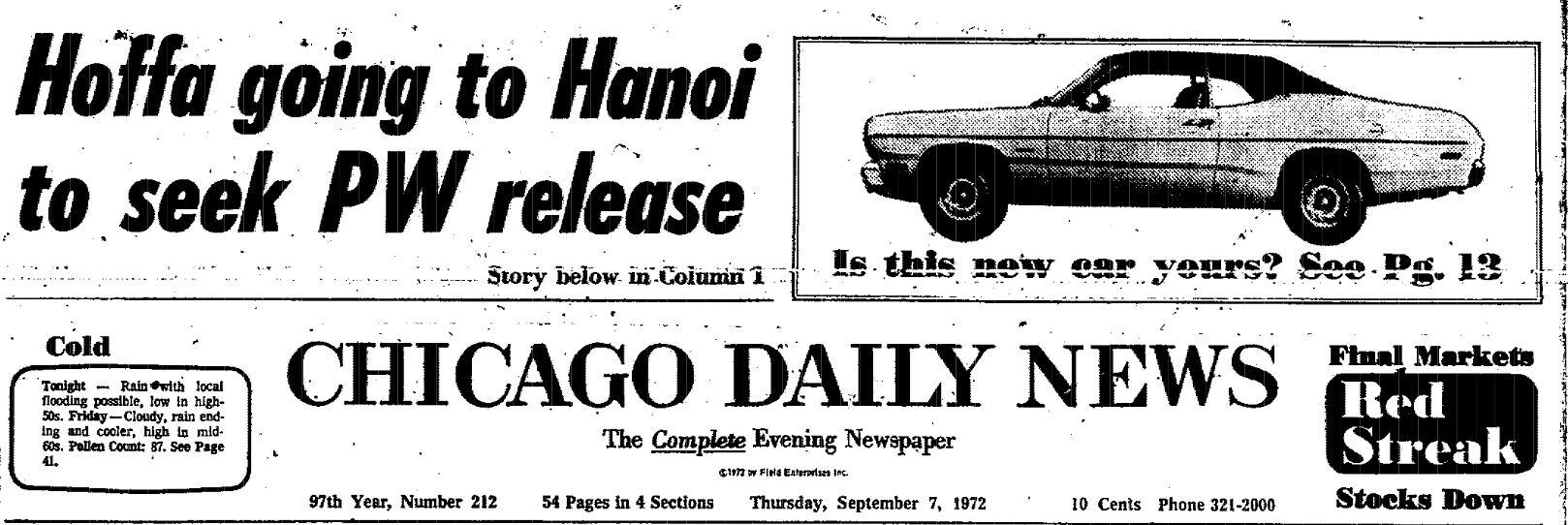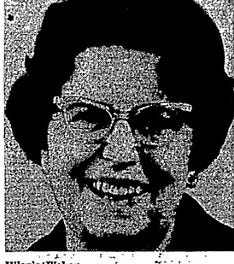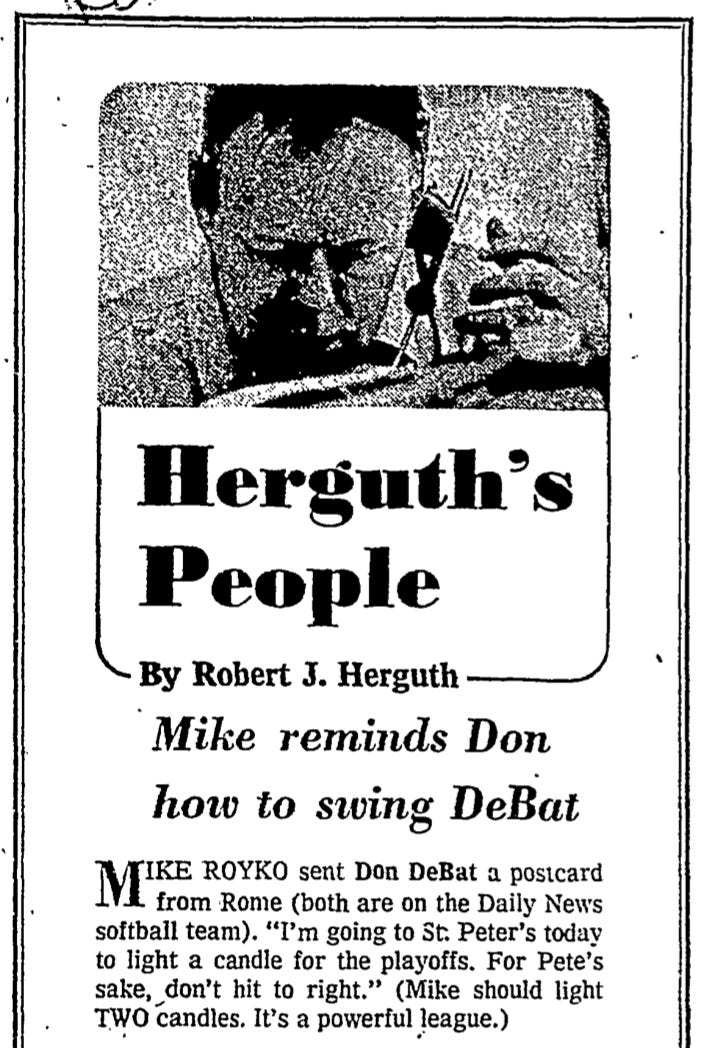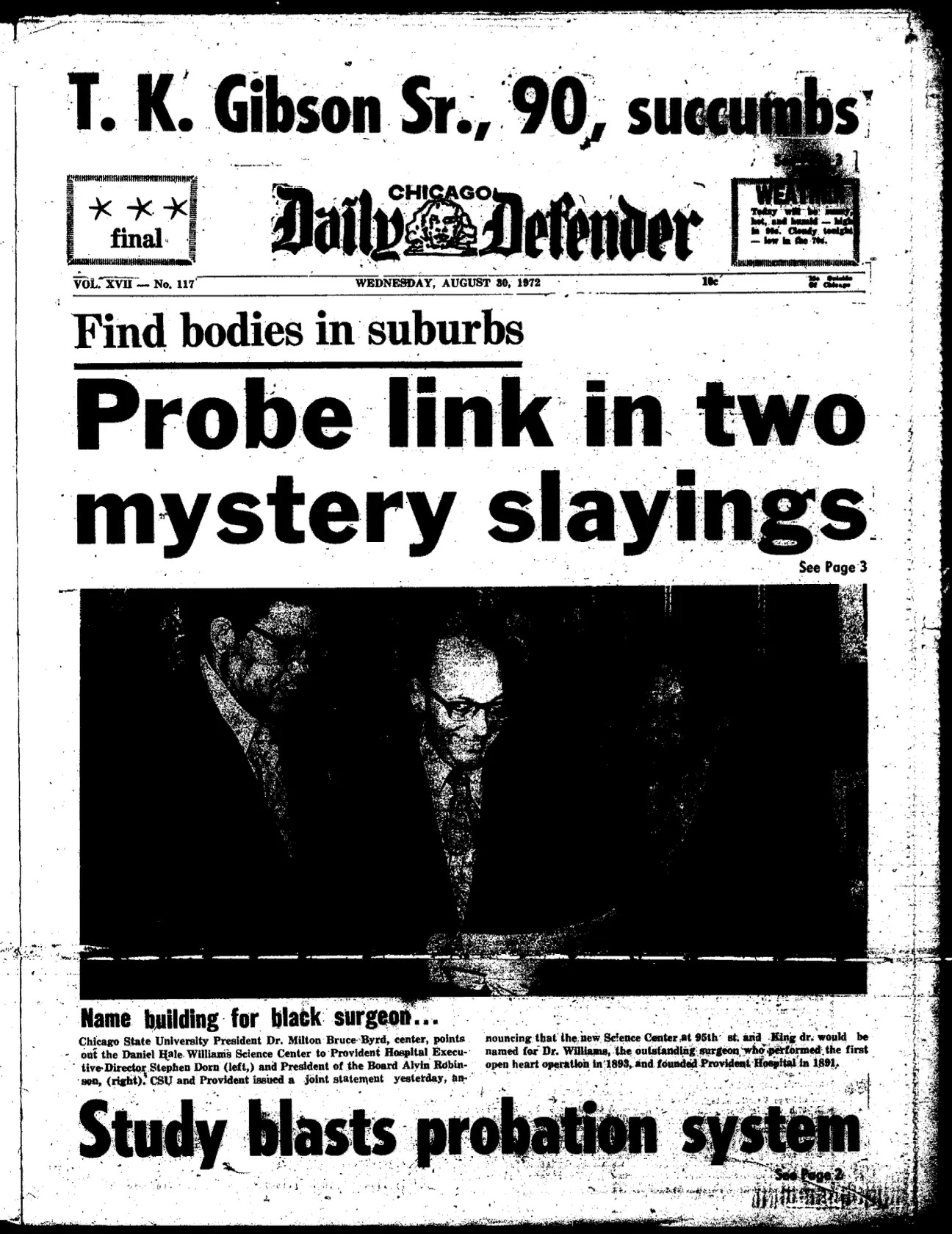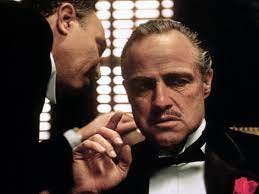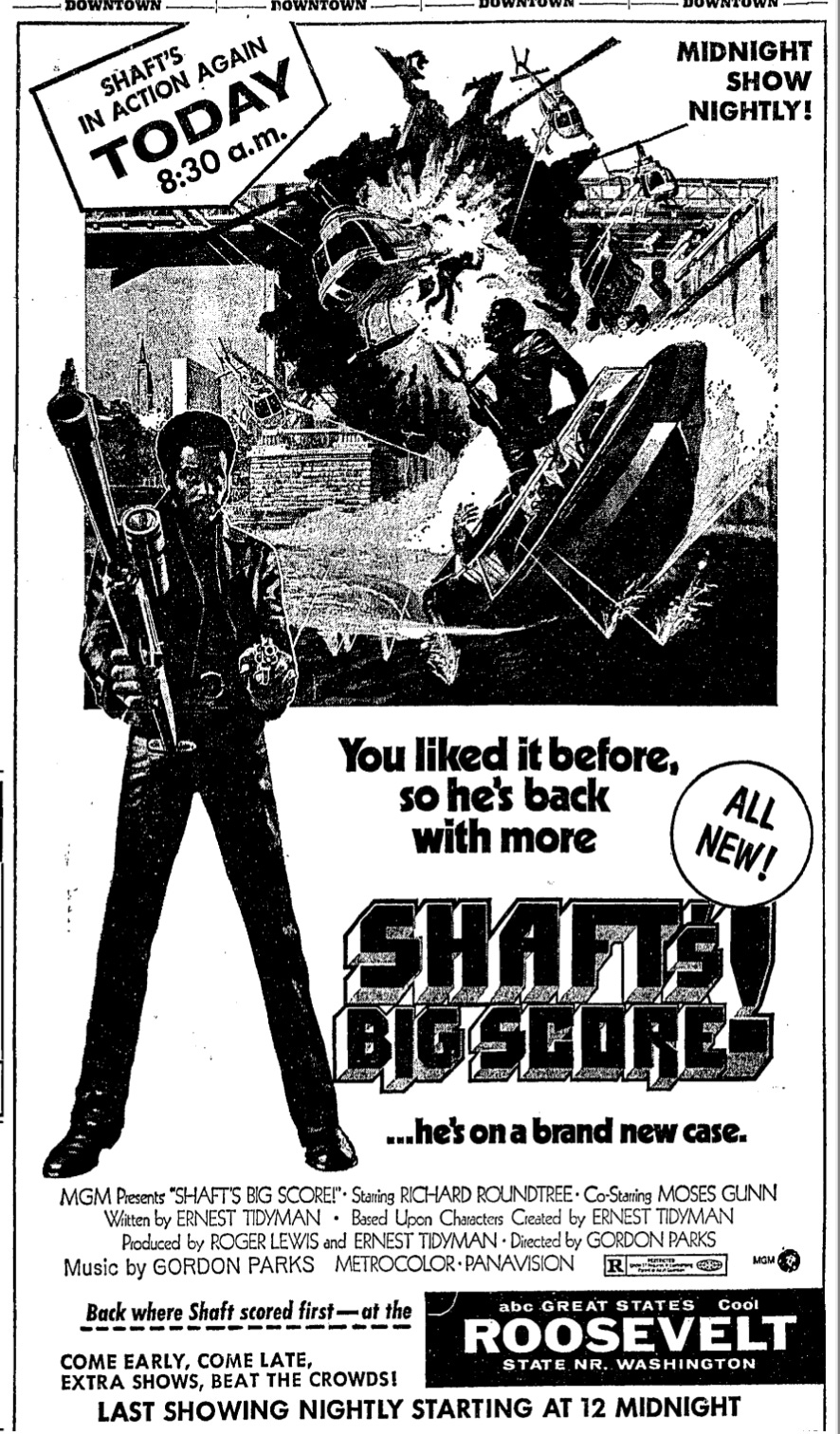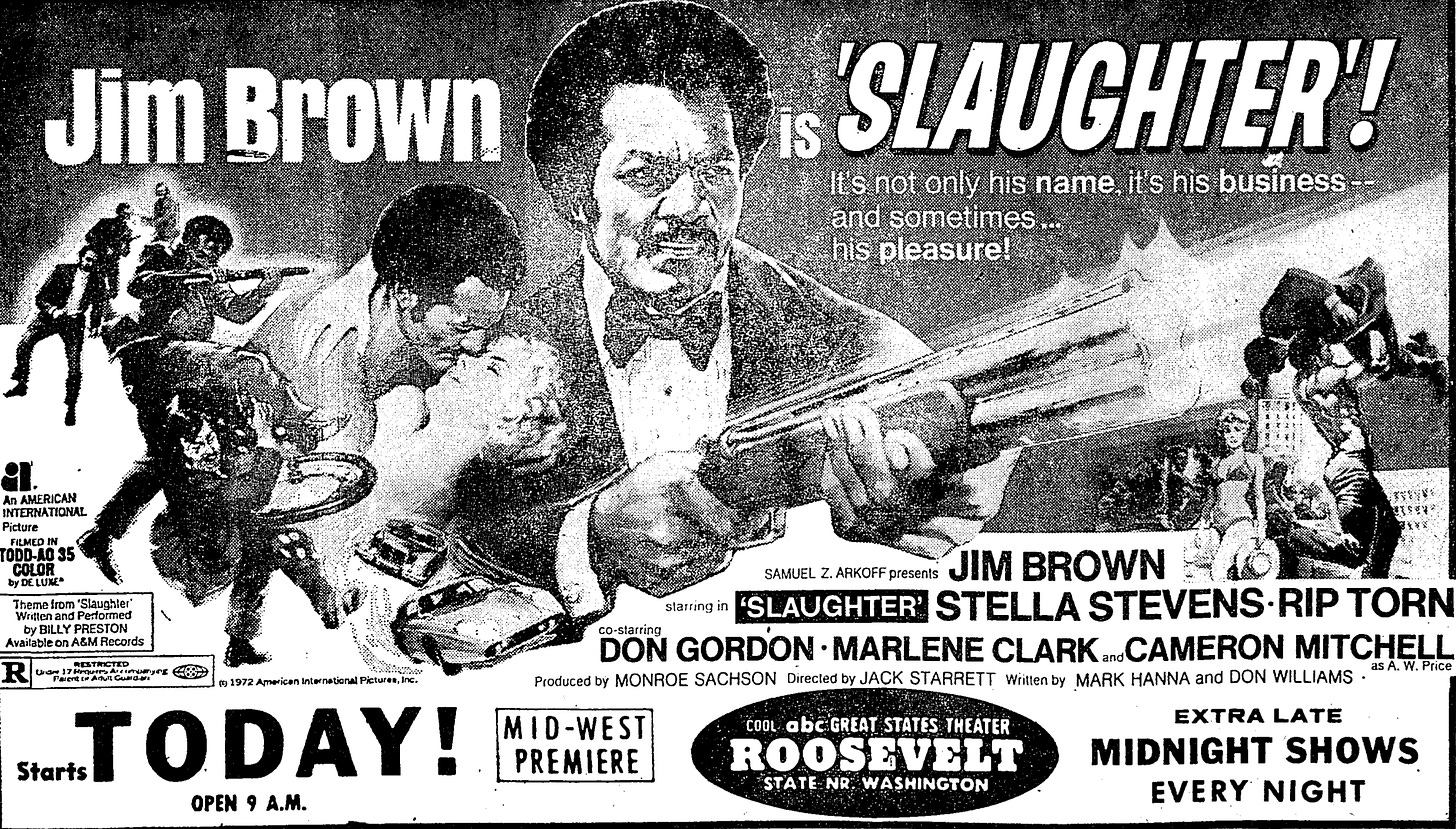THIS CRAZY DAY IN 1972: And Ziggy said, "Let there be a Bright One"
September 4-10, 1972
To access all website contents, click HERE.
Why do we run this separate item peeking into newspapers from 1972? Because 1972 is part of the ancient times when everybody read a paper. Everybody, everybody, everybody. Even kids. So Steve Bertolucci, the 10-year-old hero of the novel serialized at this Substack, read the paper too—sometimes just to have something to do. These are some of the stories he read. Follow THIS CRAZY DAY on Twitter: @RoselandChi1972.
Note: Monday was Labor Day, a slow news day—and the Daily News and Chicago Today didn’t publish. Tuesday, September 5, managed to get about 90% of the news this week. It is what it is.
September 4, 1972: Ziggy
Chicago Sun-Times: Index
The hardest thing to notice is what hides in plain sight, right? Ziggy is that thing, smack in the middle of the Sun-Times index at the bottom of page two. No idea when Ziggy began or ended his starring role in the index, but my hunch is he was there for a very long time because I didn’t notice him any more than I notice the numbers at the top of the page.
Anybody wanna field this question? Comments are always open.
Older Readers will consider Ziggy a ubiquitous cartoon that must have been there at the beginning. But in fact the one-panel cartoon was syndicated in 1971, per Wikipedia, and has just begun to permeate the culture in our timeline.
So, somewhat interestingly, the Sun-Times has chosen a new cartoon to use every day in such a prominent spot, not a long-time beloved favorite.
September 4, 1972: Grant Park beating
Chicago Tribune
A teenage couple canoodling in Grant Park were beaten badly by a “heavy-set”Black man overnight last Friday, after they dozed off in a thicket of bushes. They had been drinking some wine.
Diana Palmer, of 3709 N. Greenview, and Charles Dye, of 6719 S. Cornell, both 16, were beaten unconscious just after midnight. (Both their 1972 homes have been replaced in 2022.) Palmer woke up to find the stranger “pounding her companion on the head with a rock. The assailant then beat her until she lost consciousness.”
When Palmer came to, she flagged down a police car. Palmer and Dye both suffered “multiple skull fractures” and needed surgery.
September 5, 1972: Ziggy
Chicago Sun-Times: Index
September 5, 1972: Hawtree murders
by Kent Bernhard
“Stephen and Judy Hawtree never locked their doors.”
That’s Kent Bernhard’s striking one-sentence lede on the front page of the Daily News.
“They were open, unafraid people who didn’t think there was any danger—out there surrounded by soybean fields near south suburban Monee.
“Now they and their youngest son, Thomas, 17, are dead.”
50 years ago, before the Chicago metropolitan had truly exploded and gobbled up farmland even farther than most people would commute into the city, Monee was a strange rural land that required a map for Chicagoans to imagine where it was.
“‘They were just gunned down, executed,’ said Will County Sheriff Joseph R. Trizna. ‘It was very cold-blooded.’”
Some time between Sunday at 11 p.m. and 1 a.m. Monday, police say up to three men sneaked into the Hawtree’s modest split level and “herded the family into the basement.” The Hawtrees must have been sleeping when the intruders arrived. They were all in pajamas.
Police theorize that Thomas resisted being forced down the basement stairs, because he’d been stabbed in the back. Then the killers shot him between the eyes from about four feet away. They shot Mr and Mrs. Hawtree both in the chest, three times each.
Before or after killing the Hawtrees, the invaders ransacked the house. They didn’t find much, because there wasn’t much to find.
Mrs. Hawtree’s mother, Mrs. Jennie Verhoeven, discovered her dead family at 10 a.m. Monday morning when she walked over from her own mobile home located only 30 feet away in the back yard. She hadn’t heard a thing.
Mrs. Hawtree retired from factory work a few years ago and raised flowers and vegetables for sale in a green house on the small property. Mr. Hawtree worked at International Harvester, 1015 W. 120th.
“He used to come in here for gas,” says the local gas station attendant in Monee. “Every time he did he’d joke with you—and he’d dance a little jig. He always had a smile.”
The Hawtrees had two older sons, one a student at University of Illinois in Champaign, and the other in California.
Comparisons are drawn with the stunning August murders of the Corbett family in another rural area, exclusive Barrington Hills northwest of the city. Four members of the Corbett family were shot execution-style at night in their isolated mansion, but the caliber of the bullets from their killings doesn’t match the casings found at the Hawtree’s.
Later this week, readers will read a few short paragraphs claiming that Cook County sheriff’s police have “some concrete leads” finally in the Corbett murders.
“We now have some direction in the case and can at last see some light at the end of the tunnel,” said Lt. Jerry Harmon.
“Harmon said 30 sheriff’s policemen are working two shifts on the murders questioning possible witnesses and attempting to sort out the hundreds of fingerprints found at the scene of the crime.”
Harmon wouldn’t reveal the new leads, but he did say police have finally sorted through all the fingerprints found at the Corbett murder scene, and determined there are two sets of prints that can’t be identified.
September 5, 1972: Grant Park murder
As Labor Day crowds celebrated nearby in Grant Park on a sunny afternoon, a man savagely beat young Judith Bettelley to death in the underbrush of the Illinois Central railroad embankment, near the footbridge crossing the tracks at 11th. We’ll combine coverage from all the dailies.
As Chicago Today puts it in an unbylined article, “A young woman architect who came from England to photograph the beauty of Chicago’s building renaissance suffered instead the ugliness of death in broad daylight in Grant Park.”
“A few hundred feet away thousands of persons played tennis and enjoyed picnic lunches in the bright sun,” wrote Philip O’Connor in the Daily News.
It was about 12:45 p.m.
A middle-aged man was crossing the bridge when he looked down and saw the killer "lifting a “heavy object” over his head before crashing it down on Bettelley’s head, writes the Sun-Times. The Daily News reports it was “apparently…a hunk of wood.” Per the Tribune story, written by Philip Wattley and David Satter, the witness looked down because he heard screaming.
“‘The witness shouted, ‘Leave her alone, I’m a policeman,’ according to Comdr. Paul V. McLaughlin of the Central District, per the Sun-Times. “The witness then ran about 75 feet east to Columbus Dr. where he hailed a police car” as the attacker fled through the underbrush.
The Defender mentions that per the witness, the attacker initially ignored his yells to leave Judith Bettelley alone, and hit her several more times before fleeing.
At least 50 police officers searched the area with police dogs.
Patrolmen Charles Rudauskas and Richard Zintarski arrived on the scene first, per the Trib. “We found a jacket near the bridge and then went about 40 yards north where we found the girl,” said Rudauskas. “I reached down and felt her pulse. There was nothing; she was dead.”
Bettelley’s naked body was left with only a wristwatch, a necklace and a ring. Her clothes had been torn off, though police could not say yet if she’d been raped.
Besides Bettelley’s torn clothes, police found her 35 mm reflex camera and its case nearby. They hoped to find fingerprints on it and develop the film for clues—hoping it “might contain a photo of the slayer, perhaps snapped by Miss Bettelley,” according to the Daily News.
The watch helped police identify Bettelley, because it was inscribed “J. Bettelley,” and foreign-made. Checking downtown hotels, police learned Judith, 23, had registered at the YMCA Hotel at 826 S. Wabash at 10:45 a.m. Sunday, taking a $6.15/day room for two days. ($41.50 in 2022 money.)

“The attacker was described as a black man about 35 years old, about 5 feet 11 inches tall, and weighing 155 pounds. He was said to be wearing dark trousers and a blue shirt and had a receding hairline.”
A police sketch artist working with the witness came up with a drawing reproduced in most of the papers.
Judith Bettelley registered at the Y with the address 12 Heather Hills, Stockton Brooke, Stoke-on-Trent, Staffordshire, England. Younger Readers: In 1972, even a YMCA hotel required visitors to write down their home address in a register at the front desk.
“‘We had warned her against going to Chicago,’ said Miss Gladys Reum, an office supervisor at Spode, Inc., East Brunswick, N.J., where Miss Bettelley had a summer job until last Friday.
“‘She was such a small thing. My God! She just couldn’t have defended herself. She was only about 5 feet tall and weighed barely 100 pounds,’ said Miss Reum.”
Bettelley came to Chicago for the architecture. “I tried to get her to go to the New England area instead of Chicago,” said Miss Reum.
Judith worked in the accounting department at Spode, an English china manufacturing company. She’d visited New York the previous summer, and she was on her way to San Francisco.
“Miss Bettelley’s stop in Chicago came as a surprise to her family,” per Chicago Today. “The last word received by her father, George, 63, a semi-retired schoolmaster…and her mother, Grace, was that Miss Bettelley was flying to California.”
“We feel so helpless,” Judith’s uncle told Chicago Today. “She was just a little bit of a thing. One might take her for a teenager.”
“The uncle said that the parents broke down and had to be sedated when they learned of the death of their only child, who was expected back in England next month to take a job with a Manchester architectural firm.” Judith already had an architectural degree from Newcastle-upon-Tyne University.
Betteley’s death came on the heels of the beating of 16-year-old couple Diana Palmer and Charles Dye early Saturday morning in Grant Park, possibly by the same assailant. The Tribune reports that Palmer is in critical condition, and Dye in serious condition, at Henrotin Hospital.
The Defender mentions—the other dailies don’t—that Palmer and Dye were an interracial couple, which also explains why the Defender covers this case. The Defender’s article by Joe Ellis leads with that information:
“Police are trying to determine if there is any connection between Monday’s fatal beating of an approximately 16-year-old unidentified white girl in Grant Park and the severe beatings of an interracial couple, both 16 years of age, a few blocks away in Grant Park on Saturday night.”
“Mrs. Agnes Lehmann, a 40-year-old widow, was beaten to death two years ago in the thicket in which Monday’s murder took place,” per the Sun-Times. But Mrs. Lehmann’s murderer was caught near the scene and later convicted.
The Tribune also notes that in 1960, “an English tourist who had been in the city for only two days was attacked and beaten near the band shell but survived.”
Comdr. McLaughlin said crime was low in Grant Park this summer. Police are constantly patrolling by car, three-wheeled motorcycles, and on feet— both in uniform and plain clothes.
Tomorrow, after police finish their search, the Park District will begin cutting down all the underbrush and shrubbery along the IC tracks running through Grant Park.
“The reason shrubbery and underbrush were left near the footbridge was for esthetic reasons—to hide the IC tracks,” a spokesman tells the Daily News.
September 5, 1972
He’s ba-a-ack!
Mike Royko traveled to Europe with his family this summer. New Royko has not graced page 3 of the Daily News since July 21! Don’t miss this week’s Mike Royko 50 Years Ago Today to see what he’s been up to.
September 5, 1972: Munich terrorist attack
Life goes on outside Chicago, believe it or not. This is the headline below the Daily News masthead and Mike Royko promo.
September 5, 1972
Chicago Daily News
As we mentioned when Stone first turned up in 1972, Stone was a real-life Horatio Alger story, and obsessed with positive thinking. He wrote “Success Through a Positive Mental Attitude” with Napoleon Hill in 1960.
It’s hard to believe W. Clement Stone is not a “Simpsons” character inserted into 1972 Chicago, but there you are. We just heard about Mr. Stone two weeks ago because he hosted a big bash at the Republican National Convention, though Tribune reporter Vernon Jarrett claimed the Black Republican’s party on a yacht made Stone’s “luau” look like “a country picnic.” It didn’t occur to me then, but Jarrett probably meant “luau” literally.
W. Clement Stone also promised to match all donations to Chicago Today’s Harold Drumm fund, and back in February, he promised to use all his clout to get Chicago the two pandas the Chinese government were sending the U.S. as a gift after Nixon’s historic trip to China. When the pandas went to the D.C. zoo instead, Stone promised to personally ask President Nixon to get two more pandas for Chicago.
You may have noticed the fourth-tallest building in the city on the north end of Grant Park. That building was originally the Standard Oil Building, but now it’s Aon Center. Stone was a penniless South Side boy who grew up to start the insurance company that became the Aon Corporation.
September 5, 1972: Lindquist case
We’ve followed the tragic story of Johnny Lindquist since August 1, when his face first appeared on the front pages of the four major dailies after he was beaten into a coma by his father, William Lindquist. Over the following weeks, Chicagoans learned that Johnny had been given to an orphanage at birth and raised in foster homes, but the Lindquists never relinquished parental rights.
Johnny had lived happily for three years with the Karvaneks, a Southwest Side couple who moved to Wisconsin so Johnny and his foster brother could live on a farm, ride a pony and fish in a stream. The Karvaneks said Johnny prayed every night that he would be allowed to stay with them.
But the Lindquists asked for Johnny back, because they were told they would get larger welfare payments. DCFS and Catholic Charities took Johnny from the Karvaneks and gave him to the Lindquists without a court order, without allowing the Karveneks to appeal, and without doing any evaluation at all of the Lindquists or their household.
DCFS and Catholic Charities would not let Johnny take his favorite toy, a GI Joe doll, with him to the Lindquists.
Three months later, Johnny was in a coma. The Karvaneks brought the GI Joe to lay on the pillow next to Johnny in the hospital for five weeks as he fought for his life.
Last week, Johnny died just after his seventh birthday. His biological mother, Irene, readily admitted that William had routinely tied Johnny up with a plastic clothesline and hung him upside down over a door for entire days as punishment for wetting his pants. When Johnny was admitted to the hospital, his body was covered in bruises.
William Lindquist is in jail on murder charges. Irene Lindquist lost custody of their other four children recently when their two-year-old fell out of a second floor window while she was sleeping—after she had been out until 5 a.m. drinking with friends.
Last week, a judge denied the Karvanek’s request to bury Johnny in Wisconsin, where he had been happy with them, and gave the Lindquists authority to make burial arrangements.
Chicago Sun-Times
Sun-Times star columnist Tom Fitzpatrick attends Johnny Lindquist’s wake.
“He looked so tiny,” Fitz begins. “But then Johnny Lindquist was still only a little boy when he died last Thursday. He was three days past his seventh birthday.”
There were only two bouquets of flowers next to Johnny’s coffin, but almost a thousand people filed through Morrizo Funeral Chapel at 4817 W. Chicago Avenue, writes Fitz. “Despite the numbers that poured in steadily there was almost no noise inside the chapel. No one spoke above a whisper.”
“On the left side, in the front row, sat Johnny’s mother, Irene. She arrived at 8:20 a.m. dressed in black.
“On the right side, also in the front row, sat Mr. and Mrs. Robert Karvanek, the foster parents with whom Johnny had lived for nearly three years.
“Mrs. Lindquist and the Karvaneks neither spoke nor exchanged glances.”
Fitz now draws on reporting I haven’t seen elsewhere.
“It was on July 28 that Johnny uttered his last sound. It was a scream of pain and terror.
“‘My husband had his fist ready to hit Johnny again,’ Mrs. Lindquist has since stated. ‘I told him to stop. I told him Johnny was dying because I could see the whites of his eyes.’”
Fitz stands with Anthony Morrizo at the door of his funeral home as he nods at every visitor.
“We bought the coffin,” Morrizo tells Fitz, “and we bought the suit. It’s nice. It’s a blue doubleknit. Size 8. I bought a size 10 first but it was too big.
“A firm in Harwood Heights sent out a custom-made wig. The head injuries are so bad that we needed one. They donated it.”
“It was Labor Day,” Fitz concludes. “A bright sun beamed down on quiet streets. Johnny Lindquist’s last summer was over.”
Chicago Today
by Jeff Lyon
“It was easy to see why so many loved him, impossible to understand why someone would kill him,” writes Today’s Jeff Lyon.
“For there, in the white coffin in Morrizo Funeral Home, 4817 W. Chicago Av., lay the body of 7-year-old Johnny Lindquist.
“His face was sweet, unmarked—an angel’s face. Only a toupee betrayed the truth. Johnny had been savagely beaten five weeks ago.”
Lyon estimates the crowd at 600, all “people who knew the child only as a headline, a day-to-day progress report on his coma”.
Like Fitz, Lyon describes the division in the front row between Irene Lindquist on one side, “buttressed” by relatives, and the Karvaneks on the other.
“There was an unreality in the little funeral parlor,” he writes. “Not a single word was exchanged between the Karvaneks and Mrs. Lindquist during the 12 hours of visitation.”
“Reality lay only in the a small box that today will be lowered into the ground,” writes Lyon. “Johnny was not a headline or a progress report, nor a packaged item to be shipped back and forth.
“He was very real.”
“A wig donated by a Harwood Heights firm covered the smashed skull. But beneath it was the face of a boy, in sleep-like repose, a boy who seemed at any moment about to rise and go out to play catch, trap a grasshopper or peddle lemonade.”
Lyon is there when patrolman Roger Forte, who took Johnny to St Anne’s emergency room on July 28, pays his respects to the Karvaneks.
“I’m so sorry,” says Forte. “I heard about Johnny’s death while I was shaving. My own son came running in and said, ‘Johnny’s gonna be all right.’ I was amazed until he added, ‘Yep, he’s up with God now, and it will be all right.’”
Are you wondering about Mrs. Lindquist? I certainly did. Jeff Lyon is there first thing in the morning when she arrives for a private viewing. She, a priest and two of her other children approached the coffin.
“She cried. Then crossed herself. And, pulling back her black veil, she uttered only, ‘Johnny boy.’
“When she was seated along the east wall, the chapel doors were opened. Mrs. Lindquist never approached the coffin again and said very little…But she stayed and stayed and endured it as the words ‘murder,’ ‘hanging’s too good,’ and other phrases carried to her from strangers’ lips.”
A Mayor Daley Ouija Board? Read TCD1972’S coverage of the 1972 Democratic Convention to see what that’s about.
September 5, 1972: Black Republicans?
Chicago Daily Defender
The debate continues to sizzle over whether Democrats, especially Black Democrats, should ever vote Republican.
Russ Meek is a prominent West Side Black activist, president of a group called Search for Truth, Inc. He’s particularly involved in pushing for the investigation and resolution of the current so-called police “hit squad” murders. We read about Meek last week because he thought the tragic murders of young Rodney Harris and Lawrence Green were part of the hit squad scandal.
Reader F.J.J. below is responding to then-Georgia State Sen. Julian Bond. In April, Bond told the National Urban League convention that “Any blacks who deliver votes to President Nixon in November will be delivering blacks ‘like lambs to the slaughter,’” per a Daily News article by Lu Palmer. “Bond, 32 and a Democrat, blasted black Republicans, calling them ‘new political prostitutes,’” wrote Palmer.
On August 21, the Defender published a lengthy letter from Bond saying the quotes were his, but “missing…qualifying phrases which made it clear I intended no blanket condemnation of Negro Republicans, but did intend to severely criticize, chastise, and censure those Negroes who are attracted to the Nixon-Agnew ticket, not because of loyalty to the tenets of Republicanism, but because they have been converted through grants and contracts handed down from Washington….I said ‘these new political prostitutes belong to the HEW party, the SBA party, and the HUD party.’”
But we all know what Mark Twain said about the truth getting its boots on. In fact I think Mark Twain didn’t even really say that. Or did he, and I just heard that he didn’t? Anyway, reader F.J.J. didn’t get Julian Bond’s updated memo.
September 5, 1972
Chicago Daily News: letters
The Daily News has some illuminating letters today too.
Letter #1
Litter is a constant issue in 1972—there’s an anti-litter city contest going on I need to get in here soon. Meanwhile, this letter is specifically about “New Town,” the neighborhood known in 2022 as “Lakeview,” where Kiyo’s Japanese Restaurant was robbed last week before a tense hour-long hostage crisis and spectacular car chase across the city. In 1972, “New Town” is in the early process of gentrifying into a hip, expensive neighborhood, as its name implies. Who knows what we’ll be calling the area in another 50 years.
Letter #2 and #3
Letter #2 is a perspective on Watergate that’s probably not fringe at this point in the scandal’s timeline. Letter #3 reminds us the federal government is quite literally regulating prices.
Letter #4
And a reminder that 1972 is great as long as you can leave anytime you want.
September 5, 1972: Daily News subscription offer
September 5, 1972: Playboy party
Chicago papers rely on AP for this one. The reason I include it—besides the fact that Chicago inflicted Hugh Hefner and Playboy on the world—is because of the incongruously handy presence of a rolling pin at the LA Playboy Mansion.
A rolling pin. You’d think Hugh Hefner would not allow such a domestic tool within a mile of himself. A rolling pin is typically only used as a weapon in a cartoon like Snuffy Smith—though admittedly the example that came up quickly when I googled was not Snuffy (or more fittingly his friend Barney Google), but this successor to “Life with Father.” ‘S’nuff said— “Jiggs and Maggie” works just fine for our purpose:
Hugh Hefner was having one of his usual parties which press accounts like to describe as “poolside,” full of guests who “frolic.” The 200 guests successfully frolicked around the pool until a few of them left in a car through the rear gate.
As the gate swung open, four men “slipped inside.” AP doesn’t say they drove inside via their own car, but it’s the only explanation that makes sense as the story goes on.
Hefner’s chauffeur, Chuck Gray, was the first to confront the four intruders who apparently were not just crashing the poolside party in order to frolic, because they stabbed Gray several times.
“A security guard, Miguel Sosa Jr., 31, was stabbed in the chest when he rushed to help Gray after witnessing the chauffeur’s stabbing on a closed circuit television security system, police said.”
Chuck Gray told police that Sosa yelled for help, scaring the men off. The attackers ran back to their car. No explanation as to how they drove the car back through gate, which we can assume was mechanical. Maybe they had somehow propped it open. But first:
“Persons rushing to the wounded employe’s aid clubbed one of the intruders with a rolling pin and pulled another man off the car as it sped away, officers said.” Bold-face added here, of course.
Two of the attackers were arrested, while two got away in a car. Gray and Sosa were in critical condition at UCLA Medical Center.
“Hefner and most of the guests, described as movie and entertainment personalities and newsmen, were unaware of the assault, police said. The party went on uninterrupted.”
So picture the LA Playboy mansion party scene in “Once Upon A Time…In Hollywood,” since that film is set only a few years earlier.
September 6, 1972: Ziggy
Chicago Sun-Times
In Ziggy, the sign at the very bottom reads: “SUPPORT THE LOSER ZIGGY”
September 6, 1972: Royko promo
Chicago Sun-Times
The Sun-Times waits until Wednesday to tout Mike Royko’s return columns in sister paper the Daily News, then puts together a whole page of great cartoon Roykos never used in the Daily News—except the one where he’s drinking a beer, that one gets used once—and that’s it. The cute cartoons go bye-bye, never to be seen really again until now.
Perhaps the deep competitive nature of the two newsrooms is at work here, even when the Sun-Times is forced to promote the Daily News’ star columnist.
BTW, the Daily News never promotes anybody, or anything, in the Sun-Times.
September 6, 1972: Munich terrorist attack
September 6, 1972: Royko promo
The Daily News is touting Mike’s European columns on the front page every day this week.
Find those columns here: Mike Royko 50 Years Ago Today.
September 6-7, 1972: Grant Park murder
The four major dailies continue reporting the tragic slaying of Judith Bettelley in Grant Park, in broad daylight, as thousands of people nearby celebrated Labor Day. A round up of the new information and headlines:
“Police discovered Tuesday what they believe is a footprint of the man who killed a 24-year-old British girl in Grant Park,” write Art Petacque and Jim Casey in the Sun-Times.
“The police have located new witnesses who say they saw the slayer running north of the murder scene near the Illinois Central footbridge at 11th St. The slayer apparently ran through a hole in a wooden picket fence where two boards were missing and went through a bushy area where the footprint was found.”
Police have somehow determined that Judith Bettelley visited the Field Museum and the Shedd Aquarium on Monday. So she was walking back to her room at the Y when she was attacked and killed.
Police now speculate, per the Sun-Times, that “the slayer seized her purse, and that she apparently pursued him. He then struck her with a rock. Police believe the slayer was a derelict and was familiar with the park.”
Younger Readers: In 1972-speak, “derelict” means either a homeless person, or an extremely poor man who is likely either an alcoholic or drug addict.
I will point out that many articles have described how easy it is for someone to hide in the underbrush around the railroad embankment in order to leap out and attack people as they approach the pedestrian bridges.
Miss Gladys Reun, Bettelley’s work colleague at her New Jersey summer job, says Bettelley planned to take pictures of “Marina City, Outer Drive East, the Hancock Center, Sears Tower” and various Loop buildings.
Three witnesses who were playing tennis at the nearby Grant Park courts come forward to say they “saw a black man walk past the courts from the direction of the slaying minutes after it occurred,” per the Tribune. The Sun-Times clarifies that the witnesses saw the man emerge from the bushes.
The witnesses attended a police “show up” of suspects, but without identifying anyone.
Fingerprints have been recovered from Judith Bettelley’s camera, though there’s no word on whether her undeveloped film revealed anything.
The Daily News’ Raymond Coffey, then a foreign bureau reporter, visits Judith Bettelley’s family in Stoke-on-Trent.
“The father of a 24-year-old woman architect who was slain in Chicago’s Grant Park said that he and his wife had opposed their daughter’s trip to the United States,” Coffey writes.
Judith was the Bettelley’s only child. We never, in any of the newspapers, see a picture of Judith.
“We were worried because of the stories we had heard about the violence (in the United States). But we could not stop her,” Mr. Bettelley tells Coffey. “She did not even want any money from us for the trip. She had such determination and a sense of independence.”
It will be almost exactly one year before Judith Bettelley’s killer is caught, outside our 1972 timeline, so I’ll tell you now:
On August 14, 1973, Lester Harrison stabbed to death Judith Ott, 28, while she used a washroom in Grant Park. David and Judith Ott had just a few hours in Chicago as they switched trains. They walked over to the park with their 20-month-old baby. David held the baby while Judith went to the bathroom.
“Responding to shouts from Park District workers for help in capturing the fleeing Harrison, Ott handed the baby to a woman in the park and ran to tackle Harrison—unaware that his wife had been slain in the washroom,” wrote George Bliss and Meg O’Connor.
Lester Harrison, of 6233 S. Aberdeen, then confessed to murdering three other women in Grant Park—Judith Bettelley; Lee Alexis Wilson on Aug. 3, 1973; and Mrs. Agnes Lehman in 1970. Another man had been arrested near the site of Mrs. Lehman’s murder and convicted.
Harrison is described by a psychiatrist as a paranoid schizophrenic. In 1978, he’ll be found unfit to stand trial.
September 7, 1972: Ziggy
Chicago Sun-Times
I had not recalled what a downer “Ziggy” is.
September 7, 1972
Chicago Daily Defender: Russ Meek letter
Russ Meek, West Side Black activist who’s president of Search for Truth Inc., first alerted the Defender and the Daily News in January to the string of murders of mostly West Side Black businessmen which broke wide open into the police “hit squad” scandal on June 20.
The FBI and Chicago police alleged a group of 4-5 Black policemen had executed the men as part of a narcotics ring. Sun-Times columnist Tom Fitzpatrick devoted a column to the case via an interview with Meeks on June 21.
The lead “hit squad” suspect, Sgt. Stanley Robinson, soon disappeared in what turned out to be a staged kidnapping, then returned dramatically on August 20, saying he intended to clear his name because the whole “hit squad” story was ridiculous. Police and FBI have yet to release any evidence linking the suspects, or anyone else, to the murders.
In his letter below, Russ Meek uses the term “police task force” rather than the more popular “hit squad.”
Meek will also mention Eddie Doleberry, killed by police in June. Doleberry had just stabbed his brother to death with a butcher knife, and was walking down the street with the bloody butcher knife when police responded to citizen calls. Police say Doleberry refused to drop the knife and lunged at them, while some witnesses say Doleberry did not lunge. He was shot 12 times by the three responding cops.
I have little information on the Roger Hughes case, the prime subject of Meek’s letter today. The Defender didn’t report on it before or after this letter, and the Tribune and Daily News each ran only one story. Per those articles, Hughes was a 24-year-old Milwaukee man who attacked two officers with an umbrella while they were searching three suspects for narcotics at the corner of West End Avenue and Pulaski.
“Hughes then stepped back and reached into his coat pocket, witnesses said. The officers said when they saw the pistol, they both drew their weapons and fired. Hughes was struck by eight shots.”
Hughes was carrying a card “indicating [he] had recently been discharged from a mental institution.” Witnesses reportedly said Hughes was trying to get a gun out of his pocket, later identified as “an automatic pistol.”
September 7, 1972: Munich terrorist attack
September 7, 1972
Chicago Today: No phosphate detergent ad
“Phosphate” has recently become a dirty word, pun intended.
September 7, 1972
September 7, 1972: Jimmy Hoffa
Note the headline above the masthead, upper left. We’ll get to the car next.
Jimmy Hoffa isn’t gonna bring back any more American POWs from Vietnam than Bob Hope did. Who’s next? Take a number.
Quick background on Hoffa for Younger Readers who think he’s Al Pacino in “The Irishman.” Admittedly, even Gen X readers will think of Hoffa as the guy who might be buried on a golf course.
As the Daily News sums him up, “Hoffa headed the Teamsters from 1958 until he went to prison in March, 1967, to serve a five-year sentence for jury-tampering. Another eight-year sentence for mail fraud in connection with a Teamsters’ pension fund was imposed, to run concurrently.”
Let’s skip specifics and just say there’s a reason Younger Readers know Hoffa’s name from yet another mob movie starring Robert De Niro. It’s the same reason Hoffa disappeared on July 30, 1975, and the rampant speculation about the location of his remains could have become a children’s computer game if Where In The World Is Carmen Sandiego hadn’t come along before somebody thought of it. Hoffa was declared officially dead in 1982, after the requisite seven years had passed. Carmen Sandiego was released in 1985—about ten years earlier than I would have guessed.
In our 1972 timeline, President Nixon commuted Hoffa’s sentence last December, a few months after Hoffa was denied parole…
…but with the condition that Hoffa couldn’t go back to heading the Teamsters.
Re negotiating with North Vietnam for POWs, the U.S. government ultimately tells Hoffa thanks but no thanks.
But first Henry Kissinger, still only President Nixon’s national security advisor and not really Secretary of State, told North Vietnamese chief negotiator Le Due Tho at one of their “secret” Paris peace talks that Hoffa would be dropping by too—albeit as a private citizen.
Kissinger told Nixon about the whole wacky Hoffa thing too. That was back in July.
Real Secretary of State William P. Rogers “was reportedly furious because the State Department validated Hoffa’s passport for Hanoi travel” and canceled it. “Rogers thought it would be inappropriate for a paroled felon to be negotiating with Hanoi for release of U.S. prisoners, State Department officials said.”
So get this, though in 1972 you would have waited until the weekend to find out:
“Former Teamsters’ president Jimmy R. Hoffa apparently hoped to regain control over the giant truck union by negotiating the release of American prisoners-of-war with North Vietnam.
“Hoffa’s possible motive for a proposed trip to Hanoi was revealed in a letter from Atty. Gen. Richard Kleindienst to William L. Taub, a New York attorney for Hoffa.”
In Kleindienst’s letter, he mentioned that Taub had “proposed that the ban [from holding union office] be lifted if Hoffa visited Hanoi and obtained the release of some PWs.”
I guess you could make that up, but it wouldn’t be as interesting as it is because it’s true.
September 7, 1972: Lucky Numbers Jackpot
Chicago Daily News
But what about that car next to the Hoffa headline?
Remember that adorable Mrs. Hilaria Weber, who won $10,150 on August 9 when she found the winning Daily News contest numbers printed on the TV guide that came with her Daily News weekend edition—and brought the TV guide to mass with her on Sunday to keep it safe until she could claim her prize on Monday?
This week the Daily News is offering a car for whoever got a TV guide with “J296218” on the cover. Other numbers may win smaller cash prizes as detailed in the sort of Bingo card below. It’s kind of complicated, actually.
Winners need to mail their TV guide cover to the Daily News by Sept. 12, including their name, address and Social Security Number.
September 7, 1972
Chicago Daily News: letters on Johnny Lindquist
Daily News readers have soundly beaten Chicago Today’s this week for best letters. Here’s another compelling collection that encapsulates the current zeitgeist. Note: The letter from Sarah Levinson regarding the Rainbow Park garden will also appear tomorrow in the Sun-Times.
September 8, 1972: Ziggy
Chicago Sun-Times
Ziggy really is not the way I would want to start my day.
September 8, 1972: Hit Squad
Chicago Sun-Times
by Art Petacque
Police Sgt. Stanley Robinson, prime suspect in the police “hit squad” case, has resigned from the department.
Recall that Robinson disappeared on June 26, but it turned out he had staged his own kidnapping. He dramatically returned and turned himself in on August 20, claiming the whole “hit squad” case is ridiculous, and he would clear his name. If so, he’s still on the hook for staging his own kidnapping.
The Sun-Times’ Art Petacque reminds us that “It was learned that Robinson was in debt when he disappeared and had taken a second job, inspecting luggage at O’Hare Airport.
“Robinson said some of the black men were murdered by the Black P Stone Nation in an attempt to take over narcotics traffic.”
September 8, 1972: Royko promo
Chicago Daily News
The Daily News springs for one single cartoon to promote Mike’s vacation columns:
September 8, 1972
Chicago Daily News
Don DeBat is a key member of the Daily News softball team—he actually started it, and then Mike kind of took it over.
September 8, 1972
Chicago Sun-Times: Slaughterhouse Five ad
An astounding book, but the movie will not get good reviews. Chances are even big Vonnegut fans reading this have never seen this film. Quick: Who played Billy Pilgrim?
September 9, 1972: Ziggy
Chicago Sun-Times
These days, Ziggy would be on meds. Even Cathy had chocolate to turn to.
September 9, 1972: Rodney Harris
Chicago Daily News & Chicago Sun-Times
The tragic murder of 14-year-old Rodney Harris drew front page headlines from all four major dailies on August 25—the Defender archives and microfilm are missing that day—with follow-ups over the weekend.
Then, Rodney’s case was theoretically linked last week with the murder of Lawrence Green, 20, whose death dominated headlines on August 29 and August 30.
Green, 20, of 3653 S. King, was also apparently murdered near his home on the South Side and his body dumped on the North Shore. Rodney’s body was dumped in Evanston, and Green’s body was dumped about a mile away in Wilmette at the entrance to Gillson Park at Sheridan Road and Michigan. Rodney’s body was stuffed in an army duffel bag. Green had left the Army so recently that his discharge papers were still in his wallet.

Lawrence Green had recently started working an early shift at the Ford plant at 130th and Torrance, starting at 4:30 a.m. That’s about a 20-minute drive from Green’s apartment. But on August 27, Green allegedly left his apartment at 11 p.m. He never returned.
When Lawrence’s body was found, his head was wrapped tightly in a black plastic bag, so battered that police didn’t know until after the autopsy if he’d been shot or beaten to death. It was the latter.
West Side Black activist Russ Meek, president of Search for Truth Inc., said the Rodney Harris and Lawrence Greens murders were “part of a conspiracy to kill blacks,” likely part of the police “hit squad” murders.
As I mentioned last week, Rodney Harris’ name never surfaces again in the available digital archives for the Daily News, Tribune or Defender except in a few overviews of area violent deaths. So far as I can tell, Rodney Harris’ death was never solved.
Not so for Lawrence Green.
Oddly, only the Sun-Times and Daily News reported the resolution of Lawrence Green’s murder—even though his death was a huge story just last week.
by Dennis Byrne
Brenda Green, Lawrence’s wife of six months, was charged with murdering him along with her “friend” Melvin Loveless, 22, a CTA bus driver. Police say it “certainly looks like it could be” a love triangle, though they don’t know yet for sure.
“Neighbors of the Greens…gave police dates, times and locations when Mrs. Green met Loveless,” per the Sun-Times.
Police believe Lawrence Green was sleeping on the couch in his home when he was attacked, since they found blood stains on the wall above the couch. They think Green may have been killed with a 3-foot piece of a wood 2x4, found in the apartment being used as a doorstop. The wood is being examined in the police crime laboratory.
Per the Sun-Times, Wilmette Police Capt. Harold Graf “said the two-by-four appeared to have had bloodstains washed from it. He said other evidence he could not yet disclose ‘positively linked’ the suspects to the slayings.”

Investigators also found plastic in the apartment matching the black plastic wrapped around the head of Lawrence Green’s body. An unnamed informant took police to “a wooded area in Chicago where a bedspread was found” that “could have been used to wrap the body before it was dumped.”
Capt. Graf told reporters that Wilmette detectives “never did eliminate Brenda as a suspect,” both papers report. Brenda “was suspected initially when she failed to show emotion when she viewed her husband’s body at the morgue, according to Graf.”
They’re checking to see if Lawrence Green had life insurance, perhaps from the Army.
Last week, Brenda Green told the Daily News that Lawrence left the apartment at 11 p.m. without saying where he was going. “He didn’t seem in any special hurry and it didn’t look as though anything was bothering him,” she added. She told the Defender that Lawrence said he’d be right back. Later, she told the Tribune that Lawrence said he was going to a bar at 57th and Vincennes, and didn’t have much money on him.
Capt. Graf says police believe Lawrence Green’s murder was planned, not the result of a sudden fight. They no longer believe there’s any connection to the murder of Rodney Harris.
September 9, 1972
Chicago Sun-Times: Miss America ad
September 9, 1972
Chicago Today: Gloria Steinem-Monroe promo
September 9-10, 1972
Chicago Daily Defender: full page People’s Gas ad
The students at Dunbar Vocational High School, 3000 S. King Drive, started building this cute little two-bedroom bungalow at the start of the 1969 school year, in one of the school’s courtyards.
The Tribune reported that 2,100 students would build the 1000-square foot house with 30 supervising faculty members “to prove to the people of Chicago that the students are capable of building a structure like this,” according to plumbing instructor Eugene Zonca.
The idea for the house began five years earlier, then Dunbar architecture students drew the plans in 1968. Zonca shopped around for supply donations. When he stopped at Courtesy Lumber, then at 9501 S. King, they “literally gave the school the keys to the yard with an offer to take as much lumber as was needed.” (Courtesy Lumber company was once a well-known family-owned local company with a number of locations. It dissolved in the mid 1990s. The site of that branch of Courtesy Lumber is now part of the Chicago State University campus.)
Zonca explained that the students would do the plumbing, electricity, carpentry, and brickwork, plus install heat ducts, build cabinets, and paint and decorate. Drapes, table cloths and more will be sewn in the sewing shop.
“Just like Joe Namath, the place gets more beautiful every day,” Zonca told the Trib in 1969.
The Trib revisited in 1970, talking this time with carpentry instructor Johnny Branson, who’d become the house’s general contractor. Branson said the house was built with up to $10,000 of donated materials, which would be $67,500 in 2022 money. He estimated its resale value would be about $18,000—$121,500 in 2022 money.
“The enthusiasm for the project has been phenomenal, Branson said. ‘Sometimes we have to stop the boys from working too much,’ he said.”
As the house neared completion in 1970, Branson told the Trib it just needed heat and AC. “These certainly would be big donations,” he said, “but maybe somewhere there is someone who can see what an advantage these items would be to the students interested in those fields, and would make the gifts to the school.”
Enter People’s Gas, which then gained a great full-page ad campaign.
I couldn’t find how and when the house disappeared, but current overhead pictures of Dunbar show no sign of a house within its courtyards. A 2016 newsletter by an anti-Mayor Rahm Emanuel school group mentions that the “famous house” had been built and rebuilt for years, but doesn’t indicate if it was still there at that time.
The house was complete when the Defender visited in June 1970, with the People’s Gas heating and AC. The Defender said about 500 students worked on the house, down to upholstering the furniture and welding the wrought iron railing on the front porch. The Defender reports that the students called it “Dunbar Estates.”
September 9-10, 1972
Chicago Daily News: page of theater ads
It’s Jesus versus Jesus at the theater in 1972.
September 10, 1972
Chicago Today: Knoblauch on blaxploitation movies
This is part two of Chicago Today film critic Mary Knoblauch’s two-part look at the current crop of films starring and now made by Black Americans—now commonly referred to as “Blaxploitation” movies.
Last week, Knoblauch looked at the genre overall in “Super black flies into super flak”: “Little more than a year ago, the industry that makes American movies sat stunned as they looked at the grosses for ‘Cotton Comes to Harlem’ [which she calls ‘the first big black movie’] and ‘Sweet Sweetback,’ and ‘Shaft.’”
Knoblauch thinks the currently-playing “Super Fly” is a terrific film: “Because it’s such a good film…. ‘Super Fly’ to a great extent dispenses with the ‘black movie formula.’ Its characters are believable individuals who happen to be black.”
Last week, Knoblauch ended by acknowledging that many Black Americans don’t like the Blaxploitation films, and promised address that issue this week. Tribune columnist Vernon Jarrett will directly answer today’s Knoblauch’s article soon, and in the next item, Daily News reporter and columnist Lu Palmer lets loose on Blaxploitation movies this week.
On to today’s Knoblauch segment:
“It really isn’t hard to understand middle class black anger at films like ‘Sweet Sweetback’s Badass Song.’
“For years they had struggled to upgrade the image of black people, and here came a film about a black stud who performed in sex shows, was reared in a brothel and went around stomping policemen to death, a movie full of profanity and vulgarity.”
…. “Now, with the plethora of black superhero movies, protests against what some call ‘super xxxxxx’ movies are solidifying.”
Note: Chicago Today did not use “x’s,” and neither would any other publication in 1972. Regardless of your opinion on that practice, it wouldn’t change until fairly recently, from a 2022 POV.
Knoblauch quotes Julius Griffin, president of the Beverly Hills-Hollywood NAACP, who heads a new protest group called the Coalition Against Blaxploitation, supported by Rev. Jesse Jackson’s PUSH.
Griffin: “We must tell white and black movie producers that we will not tolerate the continued warping of our black children’s minds with the filth, violence and cultural lies that are all-pervasive in the current productions of so-called black movies that glorify black males as pimps, dope pushers, gangsters and super males with vast physical prowess but no cognitive skills.”
Griffin and others are especially furious about “Super Fly.” Knoblauch writes that pressure from Griffin and other groups is so great that Warner Brothers “is seriously thinking of changing the ending so the corrupt cops kill the pusher.”
Knoblauch thinks that would be “a terrible mistake” that would encourage censorship, but also “fog the neat dilemma…The pusher may be outside the law, but is he any worse than the corrupt cops? Is it really unbelievable that this extraordinary young man could blackmail himself to safety? Are the representatives of the law deserving of respect no matter what they do?”
Black audiences cheer movie’s leading character, the drug dealer Priest, but Knoblauch notes that audiences also cheered killings in this year’s blockbuster “The Godfather.” She argues that’s “because they are unable to see a movie for more than surface action. What one gets out of a film, be it black, white, or whatever—is what one brings to it.”
She defends the cheering further, writing that “Super Fly” explains “why ghetto heroes are often pimps and pushers” better than anything else she’s seen.
“If ‘Superfly’ excites the cheers of the audience, it is because in real life many of these people cheer men like Priest. The film is reportage, and it’s not a pretty story. Neither is ‘The Godfather.’ But the movies are not to blame for the audience reaction, because they are only barometers of existing attitudes.”
Knoblauch also thinks pushing back against Blaxploitation movies would hamper opening doors to Blacks in Hollywood. “If black films are to become a permanent fixture, the artists who make them must get a chance first to work, and then to work with some freedom,” she writes.
If the current “Sounder,” made by white filmmakers, is successful, writes Knoblauch, then maybe Black filmmakers will get financing for those kinds of films.
“I would hate to see the potentially great movie talents in this wave of new black directors shut out by black establishment narrow-mindedness, by the same kind of narrow-mindedness that affected the white film industry 40 years ago,” Knoblauch concludes.
If you’ve been reading Lu Palmer in TCD1972—we include his weekend Daily News column most weeks—you’ll probably have an idea how much use he has for Mary Knoblauch’s artistic arguments.
September 9-10, 1972
Chicago Daily News: Lu Palmer on blaxploitation movies
“The time has come when blacks must lower the boom on so-called black movies,” Lu Palmer opens today.
“In fact, decisive action against these movies is overdue. With rare exceptions, so-called black movies have become subtle, almost subliminal mind polluters.
“And black youths are the major victims because they are the ones who are largely flocking to see this new kind of vicious anti-black propaganda.”
It all started with “Shaft,” writes Palmer.
“Shaft was a super-xxxxxx type, with little if any relationship to the black experience.”
Again, Palmer and the Daily News do not use “x’s.”
“His image was of the slick type which would appeal to young blacks who need solid images of black manhood, which the American system has always tried to erase.”
Thus came the current sequel “Shaft’s Big Score,” Palmer notes—and which we will note here may have inspired last week’s horrific robbery, hostage crisis and city-wide car chase starting at Kiyo’s Japanese Restaurant. The lone surviving gunman, a young Black man named Louis Tarver, told police he met his fellow gunmen at that movie.
Palmer lists many of the other films: “Sweet Sweetback’s Baadassss Song”; the current movie starring Jim Brown, “Slaughter”; “Melinda”; “Blacula”—
“…and now the sickest of them all, ‘Super Fly.’”
Palmer approvingly quotes Chicago’s Kuumba Workshop, a Black arts group, on “Super Fly”:
“Despite the overwhelming evidence of the devastating effects of this mass killer (dope), the latest in a succession of ripoff films, all of which take deadly aim at black minds, actually glorifies a dope dealer and advocates the use of dope….
“It exploits one of the greatest problems facing black people by glamorizing a dope dealer, placing an unmistakable stamp of approval on his work, and is hustled off as adventure without the slightest social or political comment on how dope has ravaged generations of black people and is now striking at the heart of our very survival.”
Writers, directors and actors are all Black, Palmer notes. “All of which adds up to still another form of exploitation since, apparently, the best way blacks can break into the movie-making industry is to sell out their own people.”
Palmer concludes:
“The black artist—be he writer, actor, musician, painter, dancer—must combine the genius of the black mind with the beauty of the black experience to contribute to black liberation, not erect barriers to freedom.”
September 10, 1972: Ziggy
Chicago Sun-Times
And on the seventh day, Ziggy rested.
Did you dig spending time in 1972? If you came to THIS CRAZY DAY IN 1972 from social media, you may not know it’s part of the novel being serialized here, one chapter per month: “Roseland, Chicago: 1972” —FREE. It’s the story of Steve Bertolucci, 10-year-old Roselander in 1972, and what becomes of him. Check it out here.
Like this post



